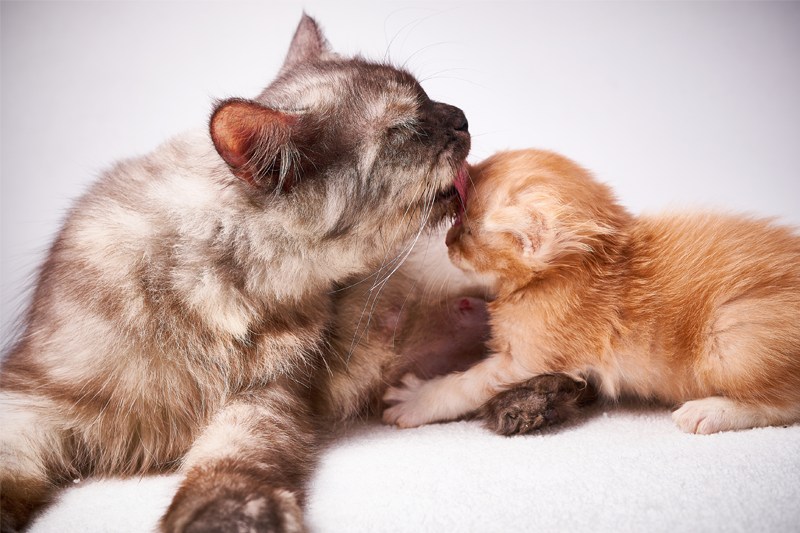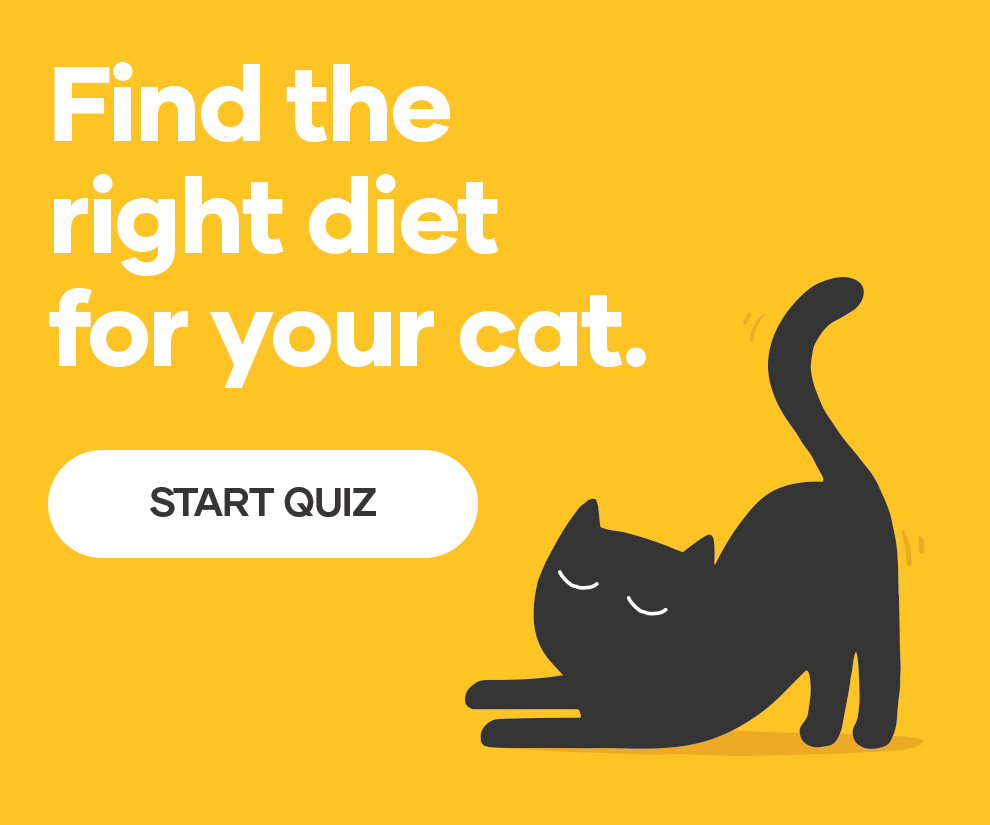It’s hard to know what to feed your cat. You can use our cat feeding guide to find the right food for your cat and their life stage.

Cats in different phases of their life have varying nutritional needs.
It’s important that you recognise their different life stages and feed them accordingly to keep them in peak physical condition. Our Cat Food Finder Tool is a helpful tool to discover the best diet for your cat according to their age, size, lifestyle and more. Here’s a look at what to feed kittens, adult cats and senior cats as recommended by our Greencross Vets. Whichever diet you decide is best for your favourite feline, ensure it is complete and balanced.
What to feed kittens
Kittens experience a very rapid growth rate in the first six months of their life, so this is the main reason the food you chose counts. Ensure it is complete and balanced. When deciding what to feed a kitten, look for a balance of proteins, fats and oils, minerals, vitamins and carbohydrates. While you can choose from wet or dry kitten food, the best kitten food will be the one that your kitten enjoys.
Choosing a food specifically formulated for kittens and following the feeding guide on the packet will ensure that they receive all the nutrients to grow into healthy adult cats. In order for them to absorb all the nutrients they need, it’s important to feed them four times per day. Once they are six months old, you can reduce the number of feeds to two per day. Some people leave food out for the entire day – this is ok providing they are not overfed.
What to feed adult cats
Once your kitten is 12 months old, they are now considered an adult cat, so you can slowly transition them to a wet cat food or dry cat food which has been specially formulated for this life stage. A complete and balanced diet is really important to keep your cat in optimum health which is why super premium cat foods, which are scientifically formulated to include a balance of dietary protein, fats and oils, vitamins and minerals, and carbohydrates which is the best choice for your adult cat.
Adult cat diets are calorie controlled, suitable for adult teeth, and are high in protein to support immune system and life stage. That said, you should avoid overfeeding by paying close attention to the feeding guide on the packet. You can treat your cat, but be sure to choose from a healthy range. Whether to feed your cat wet or dry cat food, or a combination of both, will come down to you and your cat’s preference.
What to feed senior cats
At the age of 7-8 years onwards, most cats will sit in the senior category. Cats have an average lifespan of 12-18 years, with some living even longer, so once they hit the mature milestone it’s good to think about shifting their diet to one that will support their ageing.
Senior cat food promotes digestive health as their metabolism slows with age, and it supports their immune system too. Senior cats with mobility issues may benefit from a diet that contains glucosamine and/or fatty acids such as DHA. Obesity is more common in cats once they move into the senior category, which is why foods will cater to this issue specifically. If your senior cat is showing signs of dental sensitivity, they need to be seen by your local Greencross Vets team. In the short term, you might want to move them from dry food to wet food until an appointment can be made. Wet food, which may also be more palatable due to the inherent smell, may entice these golden oldies a bit more.
Find the right food for your cat’s life stage using our Cat Food Finder Tool. Remember that when transitioning your cat to a new food, it’s really important to do so gradually so as not to upset their stomach. If you need any more information about what to feed your cat, feel free to chat to a friendly Petbarn team member.











